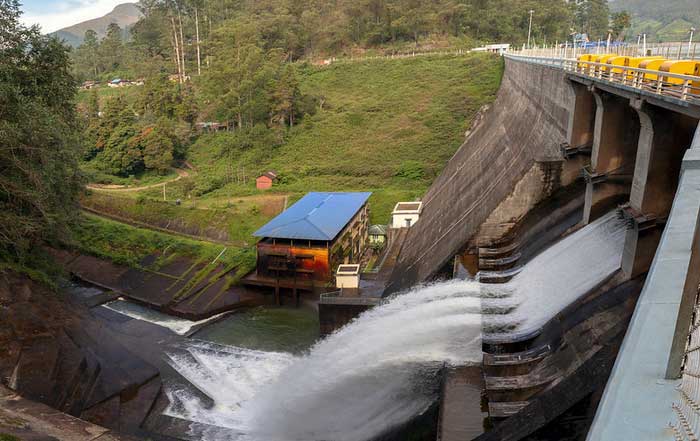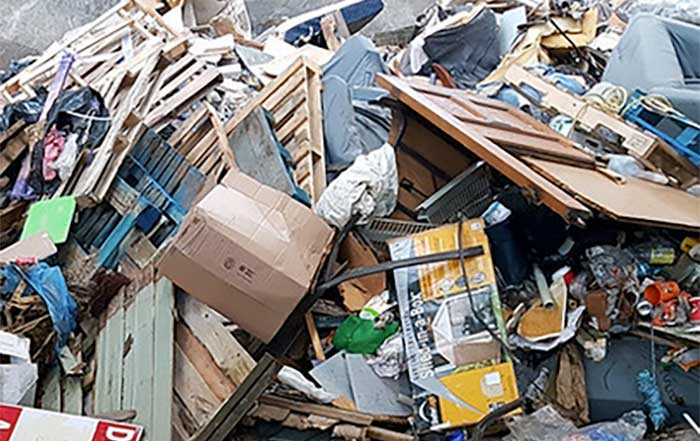In the year 2025, water has emerged not only as a fundamental element for life but also as a critical linchpin for the stability of ecosystems, the viability of industries, and the well-being of communities across the globe. As the pressures of population growth, evolving climate patterns, and industrial expansion intensify, the scarcity of fresh water has transitioned from a regional concern into a multifaceted global challenge that demands innovative, integrated, and sustainable solutions. The following comprehensive examination delves into the intricate dynamics of water scarcity, offering an in‐depth analysis of its causes, consequences, and the emerging strategies that aim to secure a resilient water future for all.
Understanding the Scope of Freshwater Scarcity
Freshwater scarcity is a phenomenon that touches every corner of the world, affecting nations and communities regardless of their level of industrialization or economic development. Although the Earth is largely covered by water, only a minuscule fraction is both accessible and suitable for human consumption, agricultural irrigation, and industrial processes. In many regions, particularly those already susceptible to drought or constrained by outdated infrastructure, the imbalance between water supply and demand has reached a critical threshold, thereby threatening not only human health and safety but also the natural ecosystems that underpin global biodiversity.
In recent years, scientific studies and policy reports have underscored that the primary sources of freshwater—rivers, lakes, glaciers, and aquifers—are finite resources whose renewal cannot keep pace with the rapid escalation in global consumption. As the population steadily advances toward projected figures that challenge historical limits, the challenge of water scarcity has become emblematic of the broader environmental and economic stresses confronting modern society. The finite nature of freshwater resources forces governments, businesses, and communities to reexamine long-standing practices and consider sustainable alternatives that balance ecological preservation with developmental imperatives.
Communities around the world are increasingly aware that the successful management of freshwater resources is intertwined with a multitude of factors, ranging from efficient infrastructure and stringent policy frameworks to cultural shifts in water usage habits. Regions once thought to be endowed with ample rainfall are now discovering that mismanagement and overuse can result in severe seasonal shortages, underscoring the complex interplay between natural variability and human intervention. For further insights into sustainable water management practices, readers can explore environmental awareness initiatives that highlight community-driven strategies for water conservation.
Drivers of Water Shortages and Their Global Impact
The multifactorial causes behind water shortages encompass a variety of environmental, economic, and social dimensions. At the forefront of these drivers is the undeniable impact of changing climate patterns, which have redefined historical precipitation cycles and exacerbated both droughts and flooding events. Extreme weather patterns, including prolonged dry spells and sudden, intense storms, directly influence the volume and reliability of water supplies, often overwhelming aging infrastructure and leaving communities vulnerable to disruptions in water delivery.
The intensification of climate change is intricately linked with rising global temperatures, which in turn alter the hydrological cycle in unpredictable ways. Regions that once experienced predictable seasonal rains now face erratic weather events that compromise agricultural productivity, reduce reservoir levels, and hinder the effective operation of water treatment systems. The resulting cascade of effects has profound implications for public health, industrial productivity, and economic stability, as exemplified by historical drought episodes that have forced entire regions to adapt to drastically reduced water availability. For more detailed climate science perspectives, readers are encouraged to visit the United Nations climate change portal.
Another significant driver of water scarcity is the rapid growth of urban populations and the expansion of cities, which place immense pressure on local water resources and infrastructure. Urban centers, with their burgeoning demand for potable water, industrial supply, and recreational use, often struggle to keep pace with population increases, leading to a heightened risk of service interruptions and infrastructural failures. In many cases, the situation is compounded by decades-old pipe systems and inadequate storage facilities that are incapable of meeting modern demands. The challenges faced by urban planners and municipal authorities are further magnified by the need to balance diverse water requirements across residential, commercial, and industrial sectors. For a detailed exploration of urban sustainability practices, one may find valuable information in sustainable business initiatives that showcase how modern cities are adapting to these challenges.
Industrialization, too, plays a crucial role in shaping water scarcity. Modern manufacturing, energy production, and other water-intensive industries require substantial volumes of water for processes such as cooling, cleaning, and product formulation. When these industries operate without adequate water recycling or conservation measures, the cumulative impact can deplete local water reserves and contribute to broader environmental degradation. Some sectors, notably textiles and paper manufacturing, have been identified as particularly high in their water consumption, prompting calls for enhanced regulatory frameworks and the adoption of water-saving technologies. The economic ramifications extend beyond the immediate depletion of water resources, affecting global supply chains and triggering fluctuations in commodity prices. Further details on responsible industrial practices can be found by exploring insights on energy conservation and home electricity generation.
Agricultural practices, historically dependent on abundant water supplies, now face the dual challenges of meeting increased food demand while contending with a rapidly changing climate. Traditional irrigation methods have proven to be inefficient, often resulting in significant water loss through evaporation or runoff, and thereby exacerbating the strain on water resources. In light of these challenges, there is a growing emphasis on the adoption of precision irrigation techniques, the cultivation of drought-resistant crop varieties, and the promotion of sustainable farming practices that minimize water wastage. The agricultural sector’s water demands are not only a matter of resource allocation but also a critical factor in ensuring food security and economic stability in regions where agriculture remains a primary livelihood. Readers interested in exploring innovative agricultural methods are invited to learn more about the enduring promise of sustainable agriculture.
Social and economic impacts of water scarcity are far-reaching, affecting everything from household health and hygiene to the broader viability of industries and job markets. When communities experience intermittent water supplies, the immediate consequences include compromised sanitation and a higher incidence of waterborne illnesses, which in turn place additional burdens on healthcare systems. At the same time, industrial slowdowns and agricultural setbacks can lead to job losses and economic instability, creating a cycle of hardship that is difficult to break. The challenges are particularly acute in regions where infrastructure investments lag behind the rapid pace of urban and industrial expansion, underscoring the need for strategic, long-term planning and investment in resilient water systems. For additional perspectives on community-based solutions, readers may visit our article on local community recycling initiatives.
Innovative Solutions and Emerging Technologies
In response to the growing crisis of water scarcity, a wide range of innovative solutions and emerging technologies have been developed to optimize water use and ensure the sustainable management of this critical resource. Among these, advancements in desalination technology have garnered significant attention, particularly in coastal regions where seawater can serve as an alternative source of freshwater. Modern desalination plants have become increasingly efficient by incorporating renewable energy sources and state-of-the-art reverse-osmosis membranes that reduce the energy consumption and environmental footprint traditionally associated with the process. Despite ongoing debates over cost and ecological impact, desalination remains a vital component of water security strategies in many parts of the world. For those interested in technological breakthroughs, the International Desalination Association offers comprehensive resources on the latest developments.
Water reuse and recycling technologies are also at the forefront of contemporary efforts to mitigate scarcity. Advanced wastewater treatment facilities now employ sophisticated filtration, disinfection, and nutrient recovery systems to transform municipal and industrial wastewater into water that is safe for non-potable or even potable reuse. These closed-loop systems not only reduce the demand on freshwater sources but also contribute to a circular economy by recovering valuable byproducts that can be repurposed in agricultural or industrial processes. As communities become more receptive to the concept of water reclamation, successful projects such as Singapore’s extensive recycling programs provide compelling evidence of how innovation can overcome entrenched public perceptions. For an in-depth look at these transformative practices, readers can explore embracing sustainable living and optimizing time management in 2025.
Smart water management systems represent another promising avenue for improving the efficiency of water distribution networks. By integrating real-time sensors, digital analytics, and automated control systems, municipalities and industries can monitor water usage with unprecedented precision, detect leaks before they escalate into major problems, and optimize distribution based on actual demand. These data-driven systems not only enhance operational efficiency but also contribute to more strategic long-term planning by providing valuable insights into consumption patterns and infrastructure vulnerabilities. The convergence of technology and water management is emblematic of the broader digital transformation sweeping across industries, where innovation serves as a catalyst for more resilient and adaptive systems. For more technical discussions on these advancements, see the evolving landscape of sustainable business innovations and consult high-quality sources such as the OECD.
Moreover, the integration of satellite monitoring and geographic information systems (GIS) has revolutionized the way water resources are mapped and managed. These cutting-edge technologies allow policymakers and water authorities to track changes in groundwater levels, monitor the health of reservoirs, and predict weather patterns that could impact water availability. By combining empirical data with predictive modeling, these systems offer early warning signs of potential shortages and facilitate preemptive measures to mitigate adverse effects. The incorporation of such advanced monitoring tools into water management strategies reflects the increasing reliance on digital technologies to address environmental challenges. Interested readers may also refer to articles by NASA and National Geographic for a broader understanding of how satellite data informs global water management.
Case Studies in Water Management: Learning from Global Leaders
Several cities and countries have emerged as trailblazers in the quest to secure water resources amid growing scarcity, demonstrating that a combination of visionary policy, technological innovation, and community engagement can lead to significant improvements in water management.
Singapore’s Integrated Water Strategy
Singapore is widely recognized as a global leader in water self-sufficiency, having developed an integrated water strategy that combines desalination, water recycling, and efficient catchment management. Faced with limited natural freshwater resources, Singapore’s government invested heavily in technologies that transform seawater and wastewater into high-quality water suitable for a wide range of uses. The city-state’s holistic approach, which includes stringent environmental regulation and comprehensive public outreach, has resulted in some of the lowest per capita water consumption rates among developed nations. The success of Singapore’s strategy has inspired numerous international collaborations and serves as a model for other water-stressed regions. For further details on integrated urban sustainability practices, explore insights on sustainable home water conservation strategies.
Los Angeles and the Drive for Urban Conservation
Los Angeles has long been synonymous with water scarcity challenges, yet recent initiatives in the sprawling metropolis have demonstrated that even large, complex urban environments can implement effective water conservation measures. Through a series of comprehensive retrofits, public awareness campaigns, and infrastructure upgrades, the city has successfully reduced per capita water consumption by promoting water-wise landscaping, installing low-flow fixtures, and incentivizing the adoption of efficient household appliances. The multi-pronged approach, which includes both technological innovation and community participation, underscores the potential for urban centers to mitigate water shortages even in the face of persistent drought conditions. For additional context on urban water conservation practices, readers are encouraged to visit the evolving landscape of global business in 2025.
Israel’s Pioneering Agricultural Efficiency
Despite its arid climate, Israel has become synonymous with agricultural innovation through its pioneering use of drip irrigation and precision water management. By deploying advanced irrigation techniques that deliver water directly to the roots of crops, Israel has not only maximized yields in water-scarce environments but also set new benchmarks for efficiency in agricultural water use. Coupled with intensive research in drought-resistant crop varieties and soil conservation practices, Israel’s approach demonstrates how sustainable agricultural practices can be harmonized with environmental conservation. This exemplary model has spurred international interest and adaptation in regions facing similar climatic challenges, highlighting the critical role of innovation in ensuring food security amid water scarcity. For those interested in exploring similar themes, consider reading about the enduring value of composting for sustainable progress and local food sourcing as a cornerstone of sustainable living.
Collaborative Efforts and Policy Initiatives
The effective management of water scarcity requires not only technological innovation but also cohesive policy frameworks, robust governance structures, and collaborative international efforts that span multiple sectors and borders. In an increasingly interconnected world, transboundary water management has become a key priority for governments and international organizations alike, as rivers and aquifers traverse national boundaries and require coordinated oversight.
Infrastructure Upgrades and Governance Reforms
A significant barrier to ensuring consistent water supply is the widespread prevalence of aging and inefficient water infrastructure. Leaking pipelines, outdated treatment facilities, and insufficient storage capacity have led to substantial losses even before water reaches end users, exacerbating the challenge of meeting growing demand. Governments are now prioritizing investments in modernizing water infrastructure, with initiatives that include retrofitting urban water systems, expanding reservoir capacities, and implementing smart monitoring technologies to reduce inefficiencies. Such initiatives are frequently supported by public-private partnerships that harness the expertise and financial resources of both sectors, a trend that is steadily reshaping the dynamics of water governance worldwide. For further discussion on infrastructure challenges and sustainable policy measures, readers may wish to explore effective dispute resolution as a pathway to sustainable living in 2025 and beyond.
Regulatory and Policy Dimensions
At the heart of sustainable water management lies the development of comprehensive legal frameworks that balance economic growth with environmental preservation. Policymakers are increasingly recognizing that water must be managed as a shared resource—a public good that requires equitable distribution and protection from overexploitation. Progressive regulatory initiatives now include tiered water pricing models that incentivize conservation, water rights trading systems that ensure allocation efficiency, and strict pollution controls that prevent industrial and agricultural runoff from contaminating vital water sources. Such policies are often bolstered by international collaborations and knowledge-sharing platforms, which facilitate the adoption of best practices across borders. For a broader understanding of these regulatory innovations, readers can explore related discussions on global imperatives of resource preservation and environmental challenges in 2025.
Public-Private Partnerships and Community Engagement
In light of the vast scale of the water scarcity challenge, it has become increasingly clear that no single entity can address the issue in isolation. Instead, collaborative models that bring together government agencies, private companies, academic institutions, and civil society organizations are essential for the design and implementation of effective water management strategies. Such partnerships not only share the financial risks associated with large-scale projects but also foster a multi-stakeholder approach that integrates diverse perspectives and expertise. For instance, initiatives that combine the technological prowess of IBM or Siemens with local water management agencies have resulted in the deployment of smart water grids that efficiently allocate resources and minimize wastage. Similarly, community-based programs that educate residents on water conservation practices have proven highly effective in reducing domestic water use and ensuring the long-term sustainability of local water supplies. To learn more about community-led initiatives, readers are encouraged to explore our feature on environmental and personal benefits of a clean home.
Sustainable Agriculture and Water-Efficient Food Systems
Agriculture continues to be one of the largest consumers of freshwater globally, making it an area where innovation and sustainability are not merely desirable but absolutely essential. With growing populations and increasingly erratic weather patterns, the agricultural sector is under unprecedented pressure to produce more food with fewer water resources, thereby necessitating a radical rethinking of traditional farming practices.
Precision Irrigation and Advanced Farming Techniques
The adoption of precision irrigation systems has transformed conventional agricultural practices, enabling farmers to significantly reduce water wastage while maintaining, and in many cases increasing, crop yields. Through the use of sensors, automated drip systems, and satellite-based analytics, farmers can now determine the exact water requirements of their crops and deliver precise amounts at optimal times, thereby minimizing evaporation and runoff. This approach not only conserves water but also helps in reducing the leaching of fertilizers and pesticides into surrounding ecosystems, ensuring that agricultural practices remain both economically and environmentally sustainable. For additional insights into cutting-edge irrigation methods, readers may refer to articles on the power of sustainable gardening that explore similar innovative techniques.
Crop Diversification and Genetic Innovations
A key element in reducing water dependency lies in the selection and cultivation of crop varieties that are inherently more resilient to water scarcity. Agricultural research institutions and seed companies are developing new cultivars that boast enhanced drought resistance and reduced water needs, a move that is gradually shifting the paradigm in regions prone to extreme weather variability. Crop diversification, which involves the strategic rotation of water-intensive crops with those that require significantly less water, has also proven effective in maintaining soil health and reducing the overall water footprint of farming operations. These innovative practices are gradually transforming the agricultural landscape, providing a roadmap for food security even in the face of mounting water challenges. For those interested in learning more about sustainable agricultural practices, our article on embracing organic agriculture as a pillar for sustainable living in 2025 offers valuable perspectives.
Nature-Based Solutions and Eco-Friendly Farming
Beyond technological interventions, nature-based solutions are increasingly recognized as integral components of a holistic approach to water management in agriculture. Practices such as reforestation, wetland restoration, and the maintenance of natural riparian buffers help to stabilize local water cycles by enhancing groundwater recharge, filtering pollutants, and mitigating the impacts of heavy rainfall. In many rural communities, the integration of eco-friendly farming techniques has led to improved water retention in soils and a more balanced ecosystem that benefits both agriculture and local biodiversity. The symbiotic relationship between sustainable farming and environmental conservation highlights the interconnectedness of human activities and natural systems. For further reading on these complementary strategies, see our coverage on the value of tree planting for environmental and human prosperity.
The Road Ahead: Resilience and Adaptation in a Changing World
As the global community moves deeper into the 21st century, the challenges posed by water scarcity are expected to intensify, necessitating a forward-looking approach that blends technological innovation, policy reform, and community engagement. The coming years will witness an increasing reliance on adaptive management strategies that integrate real-time data with long-term planning to mitigate the effects of unpredictable weather patterns and shifting demographic pressures.
Infrastructure Adaptation for Extreme Weather
The unpredictability of weather patterns calls for a comprehensive reexamination of existing water infrastructure, with a focus on resilience and adaptability. Retrofitting dams, reinforcing levees, expanding underground water storage, and incorporating green infrastructure elements such as permeable pavements and bioswales are just a few of the measures that communities are implementing to prepare for extreme weather events. These infrastructure adaptations not only safeguard water supplies during periods of drought but also mitigate the damage caused by flooding and other catastrophic events. Municipalities around the world are increasingly investing in such adaptive measures, recognizing that long-term resilience requires a proactive, rather than reactive, approach. For additional information on infrastructure innovation, readers might explore our insights on energy conservation and home electricity generation.
Drought Preparedness and Contingency Planning
In regions where water scarcity is a recurrent challenge, the development of robust drought preparedness and contingency plans has become an essential component of water resource management. These plans typically involve establishing water usage thresholds, implementing phased rationing systems, and maintaining strategic reserves to bridge the gap during times of acute shortage. By integrating real-time monitoring with predictive models, policymakers can develop early warning systems that enable communities and industries to prepare for impending water crises, thereby minimizing both economic disruption and human suffering. The importance of such contingency planning is underscored by numerous success stories from regions that have effectively navigated water crises through proactive, community-based strategies. For further exploration of these themes, readers can refer to our detailed analysis on reducing carbon footprints: a guide to sustainable living in 2025.
Financial Instruments and Market-Based Solutions
As governments and private entities seek to fund the extensive infrastructure and technology upgrades required to ensure water security, innovative financial instruments have emerged as critical tools in mobilizing capital for sustainable projects. Market-based approaches such as water pricing models, water rights trading, and green bonds provide economic incentives that encourage conservation while ensuring that water remains a viable and fairly distributed resource. These financial mechanisms not only facilitate investment in essential infrastructure but also foster accountability and transparency, ensuring that funds are allocated efficiently and equitably. For additional information on market-based water solutions, readers are encouraged to review articles on global drives toward plastic sustainability and recycling as a cornerstone of resource management.
Building a Global Coalition for Water Stewardship
The challenges of water scarcity are too vast and complex to be addressed by isolated efforts; they demand a coordinated global response that unites governments, businesses, researchers, and communities in a shared commitment to sustainability and resilience.
Transboundary Water Management and International Cooperation
Many of the world’s major rivers and aquifers traverse national boundaries, making transboundary water management a critical component of global water security. International treaties and cooperative management frameworks help to ensure that water is shared equitably and that the ecological integrity of shared basins is maintained. Successful transboundary water management depends on trust, transparency, and the willingness of all parties to collaborate on data sharing, infrastructural development, and emergency response strategies. These collaborative efforts not only reduce the likelihood of conflicts over water but also serve as a model for other shared resources in an increasingly interconnected world. For further reading on these critical international efforts, interested parties may visit reputable sources such as Reuters and The Guardian.
Corporate Water Stewardship and Private Sector Engagement
The private sector is playing an increasingly prominent role in addressing water scarcity, as companies recognize that responsible water management is essential not only for environmental sustainability but also for long-term business resilience. Forward-thinking corporations are incorporating water stewardship into their environmental, social, and governance (ESG) strategies, setting ambitious targets to reduce their water footprints, investing in cutting-edge recycling technologies, and partnering with local communities to rehabilitate watersheds. These initiatives not only mitigate the risks associated with water scarcity but also enhance brand reputation and foster consumer trust. For a detailed analysis of corporate water strategies, readers may find valuable insights in our discussion on sustainability leadership in 2025.
Empowering Communities and Advancing Educational Initiatives
Ultimately, the long-term success of water management initiatives depends on the active participation and education of communities at every level. Grassroots programs that teach water conservation techniques, promote the installation of rainwater harvesting systems, and encourage local stewardship of natural resources are essential in building a culture of sustainability. Public outreach campaigns, community workshops, and school programs that focus on the importance of water conservation empower individuals to become active participants in the stewardship of their local environments. Such initiatives not only promote immediate water savings but also instill a sense of responsibility that will benefit future generations. For further inspiration and practical tips on water conservation at home, readers can explore transforming your home into an eco-friendly haven.
The Imperative of Holistic, Integrated Water Management
The multifaceted challenges posed by water scarcity require a holistic approach that considers not only the immediate technical and infrastructural needs but also the broader social, economic, and environmental dimensions. The nexus between water, energy, agriculture, and economic development is increasingly recognized as a critical area for interdisciplinary collaboration and integrated policy-making.
Embracing a Systems Approach to Water Management
A systems approach to water management involves understanding the complex interdependencies among various sectors and stakeholders and developing solutions that deliver co-benefits across multiple areas. This approach recognizes that investments in water infrastructure, for example, can simultaneously contribute to energy efficiency, enhance public health, and promote economic growth. Integrated management strategies that align water usage with land use planning, urban development, and environmental conservation are essential in building resilient communities that can adapt to both short-term shocks and long-term trends. For more comprehensive perspectives on integrated sustainability, readers are invited to read our article on embracing unplugged learning for a sustainable future.
Cross-Sector Collaboration and Knowledge Transfer
The exchange of ideas and best practices among different sectors and international partners is a vital component of modern water management strategies. Universities, research institutions, and industry leaders are increasingly collaborating to develop innovative solutions, pilot new technologies, and share lessons learned from successful projects. These partnerships not only accelerate the pace of innovation but also ensure that emerging technologies are appropriately adapted to local conditions and constraints. Forums organized by international bodies such as UN-Water and academic conferences sponsored by leading institutions create platforms for dialogue and collaboration that are indispensable for driving progress in the field. Interested readers may also consult resources available on platforms like World Bank and Financial Times for further insights.
Charting a Course Toward a Sustainable Water Future
The challenges associated with water scarcity are formidable, yet they are matched by the ingenuity and determination of the global community to forge sustainable solutions. The path forward will require ongoing research, strategic investments, and an unwavering commitment to stewardship and innovation at every level of society.
Investing in Research and Technological Innovation
The continued advancement of water-related technologies—from improved desalination systems and wastewater recycling to precision agriculture and smart water grids—relies on robust investment in research and development. Public funding, private sector investments, and collaborative research initiatives are critical to driving the breakthroughs that will ultimately enable society to manage water resources more effectively. Academic institutions and private companies alike are dedicating significant resources to exploring innovative approaches, including the development of new materials for water filtration, advanced sensor networks for real-time monitoring, and predictive models that integrate climatic, hydrological, and socio-economic data. For those interested in the intersection of technology and environmental sustainability, the International Panel on Climate Change (IPCC) offers valuable reports and insights that inform policy and research.
Policy Reforms and Regulatory Innovations
Equally important are the policy reforms that can create an enabling environment for sustainable water management. Governments around the world are experimenting with regulatory innovations that encourage water conservation, promote equitable distribution, and penalize practices that lead to overuse and pollution. Whether through the implementation of tiered pricing models, water rights trading systems, or public-private partnership frameworks, these policy measures serve to align economic incentives with environmental stewardship. Such regulatory reforms require transparent, participatory processes that engage stakeholders across sectors, ensuring that the resulting policies are both effective and equitable. For additional context on policy innovations, readers may explore resources provided by the OECD and delve into related topics such as global imperatives for cleaner air.
Engaging the Next Generation and Fostering a Culture of Conservation
Long-term success in addressing water scarcity ultimately hinges on the education and empowerment of future generations. By integrating water conservation into school curricula, community programs, and public outreach initiatives, societies can cultivate a culture of sustainability that is as enduring as it is transformative. The role of education in fostering environmental awareness cannot be overstated, as it lays the foundation for a more informed, engaged, and proactive citizenry. Through initiatives such as experiential learning projects, public lectures, and interactive digital platforms, young people are increasingly equipped with the knowledge and tools needed to become effective stewards of their local water resources. For more ideas on how to inspire community action, readers can discover additional insights in our article on sustainability education for a prosperous planet.
Conclusion: A Collective Call for Action
The evolving water crisis of 2025 stands as one of the most pressing challenges of our time, encapsulating the interwoven complexities of climate change, urbanization, industrialization, and social inequality. The strategies outlined in this comprehensive examination—from technological innovations in desalination and smart water management to the transformative power of integrated policy reforms and community engagement—offer a roadmap for a future where water remains a secure and accessible resource for all.
While the challenges are substantial, the collective resolve of governments, businesses, researchers, and communities around the world provides a beacon of hope in an era defined by uncertainty. The journey toward sustainable water management is not merely a technical or economic endeavor; it is a profound commitment to preserving the natural balance that sustains life on Earth. By investing in resilient infrastructure, fostering cross-sector collaboration, and empowering individuals through education and community initiatives, humanity can turn the tide on water scarcity and build a legacy of environmental stewardship for future generations.
For readers who wish to explore additional dimensions of sustainable living and innovative resource management, our website offers a wealth of articles and resources that cover related topics such as achieving a pristine home and protecting the planet, battling the tide: combating plastic pollution in the world’s oceans, and global calls to rethink waste: emerging initiatives and the future of sustainability.
In a world where the stakes have never been higher, the necessity for visionary leadership, robust scientific research, and unified community action has never been more apparent. The enduring challenge of water scarcity is a call to action for every sector of society, urging a transformation that embraces innovation, fosters equity, and champions the sustainable stewardship of our most precious resource. By weaving together the threads of technological advancement, policy reform, and cultural transformation, humanity can forge a resilient water future—one where the legacy of scarcity is replaced by the promise of sustainability, prosperity, and enduring environmental balance.
As you navigate the diverse insights and initiatives presented here, remember that every effort, whether on a global scale or within your own community, contributes to a larger movement aimed at preserving water for generations to come. Embracing this challenge with determination and collaborative spirit is not merely a choice but an imperative for securing a sustainable, resilient future for our planet.
For ongoing updates and further in-depth analysis on water conservation and sustainability trends, consider exploring our additional articles such as embracing sustainable living and optimizing time management in 2025, rising tide of sustainable consumerism: navigating the future of eco-friendly choices, and the evolving landscape of intellectual property rights in 2025.
This narrative, while grounded in the current challenges of water scarcity, ultimately serves as an invitation to join a collective mission—a mission that transcends borders and sectors to safeguard the lifeblood of our planet. Through coordinated actions, relentless innovation, and a deep-seated commitment to environmental stewardship, the global community can rise to the occasion and secure a water-secure future that honors both nature and human progress.
For further insights on sustainable initiatives and transformative approaches to environmental challenges, readers are encouraged to explore additional resources available on our website as well as trusted external sources like BBC, The Guardian, World Economic Forum, and National Geographic.
By weaving together diverse strands of knowledge and experience—from the pioneering water strategies of Singapore and Israel to the innovative urban conservation measures in Los Angeles—this comprehensive exploration of the global water crisis in 2025 serves as both a testament to human ingenuity and a call to concerted action. Each technological breakthrough, policy reform, and community initiative discussed herein not only exemplifies the potential for overcoming adversity but also underscores the shared responsibility that every stakeholder bears in preserving this indispensable resource.
In the spirit of unity and proactive problem-solving, every reader is invited to consider their role in this collective journey toward sustainable water stewardship. Whether by advocating for policy change, adopting water-efficient practices at home, or supporting innovative technologies in the private sector, the actions taken today will shape the contours of our water future and, by extension, the overall health of our planet.
For those interested in expanding their understanding of the interconnectedness of water, climate, and economic development, our extensive collection of resources includes topics such as achieving sustainable electricity use in 2025: strategies and insights for work and home, the urgent need for alternative energy in 2025, and the transformative power of composting practices, partnerships, and progress.
In closing, the pursuit of a water-secure future in 2025 is a multifaceted challenge that calls for an unprecedented level of collaboration, innovation, and commitment from every corner of society. As the stakes continue to rise, the convergence of technology, policy, and community action offers a beacon of hope—a promise that with determination and collective effort, the world can overcome water scarcity and pave the way for a resilient, sustainable future that honors both human ingenuity and the natural systems that sustain life.
Visit our homepage to stay informed about the latest developments and to join a community of like-minded individuals dedicated to protecting our planet for generations to come.
By embracing the challenges and opportunities presented by the global water crisis, the world is poised to embark on a transformative journey that redefines the relationship between humanity and one of its most vital resources. Through visionary leadership, relentless innovation, and the shared commitment of communities across the globe, the path toward a resilient and sustainable water future is not only within reach—it is a promise that the legacy of scarcity will be transformed into a legacy of abundance, equity, and environmental stewardship.
For additional updates and further analysis on water management and sustainability, consider exploring our extensive library of articles and reports available through our internal network, and stay connected with trusted sources such as Reuters, World Bank, and Financial Times.
Embracing a future where water is conserved, shared equitably, and managed with precision is a monumental challenge, yet it is one that holds the key to sustaining life, economic prosperity, and the health of our planet. As stakeholders from every sector continue to work together, the innovations and policies emerging today will lay the foundation for a brighter, more resilient tomorrow—a tomorrow where water, in all its vital significance, remains a source of hope, progress, and enduring inspiration for generations to come.
Explore our additional content on climate change, environmental awareness, and sustainable living to further understand how integrated approaches can lead to a holistic transformation in the way we manage our natural resources.
This article is proudly presented by yousaveourworld.com, a platform dedicated to fostering sustainable practices, innovative solutions, and collaborative efforts to safeguard our planet's most precious resources.








